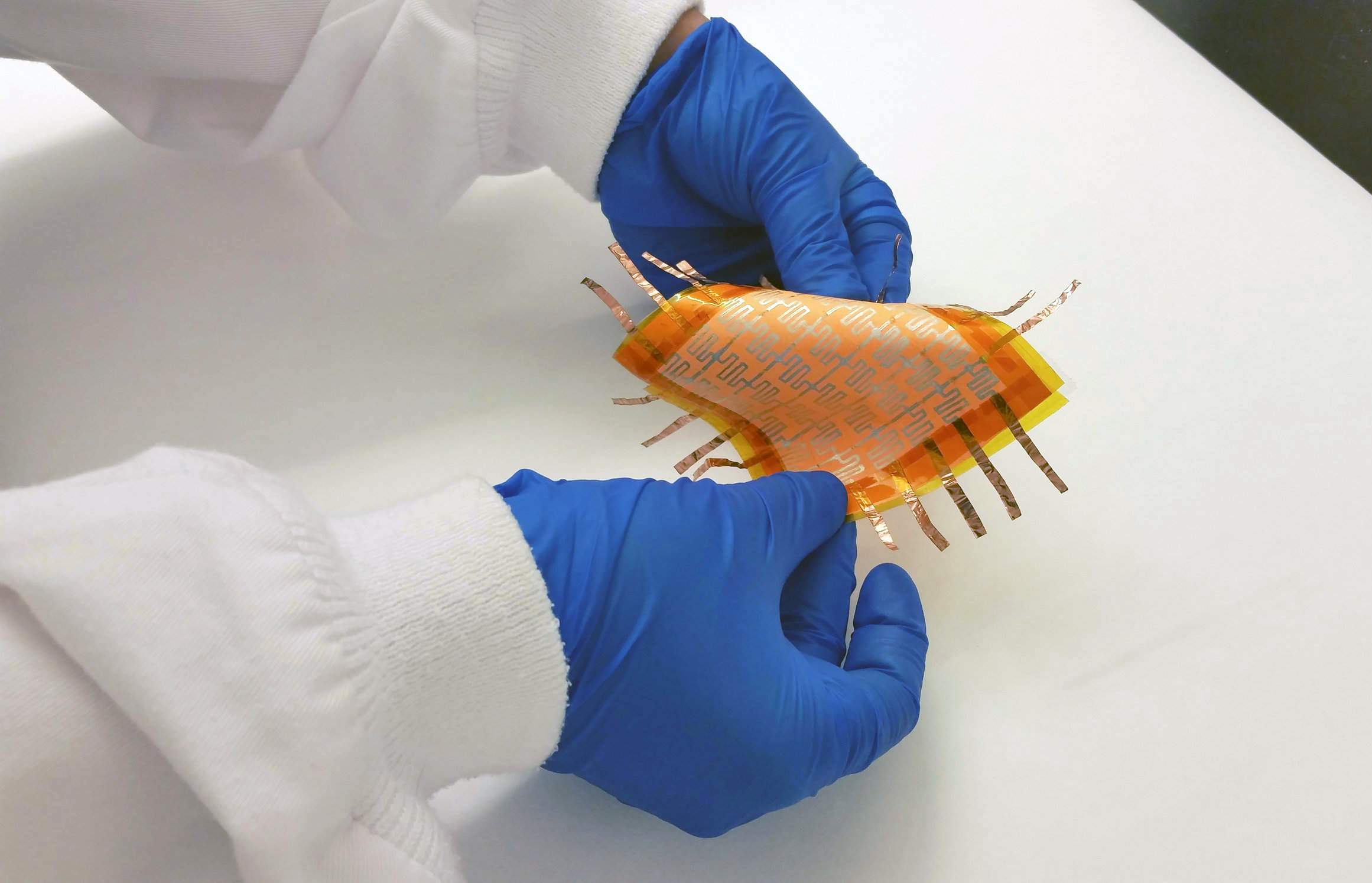Paper Watch and Artificial Paper Skin Sensors

The flexible temperature array was made by drawing a resistor structure with a silver conductive ink pen on Post-it paper. © 2016 KAUST
Using paper as a substrate and sensing material for sensors fabrication can be advantageous due to its porosity and larger interfacial area. These characteristics contribute to high sensitivity and faster response times.
KAUST electrical engineering scientists have developed a flexible and non-functionalized low-cost multi-sensory platform fabricated from common paper and other off-the-shelf materials such as sponges and aluminum foil. This technology presents a cheaper alternative to the widespread artificial skin systems.
Paper skin is developed through the 3D integration of pressure, temperature and humidity sensor arrays. Post-it notes are used as the hosting substrate and sensing materials for the humidity sensors. The porous nature of cellulose paper enables fast absorption and evaporation of water on its surface, enabling the detection of relative humidity levels with faster response and recovery times.
Temperature detection is achieved through a resistive aluminum foil structure, changing its resistance with temperature variations. Pressure sensing is possible through the porosity and compressibility of the sponge, where aluminum foil serves as the conducting electrode of the parallel-plate capacitor structure.
This technology is targeted at making healthcare monitoring systems accessible and affordable for the people who need it the most – often the people who do not have access to niche and expensive technologies.
By KAUST Discovery.
Using paper as a substrate and sensing material for sensors fabrication can be advantageous due to its porosity and larger interfacial area. These characteristics contribute to high sensitivity and faster response times.
KAUST electrical engineering scientists have developed a flexible and non-functionalized low-cost multi-sensory platform fabricated from common paper and other off-the-shelf materials such as sponges and aluminum foil. This technology presents a cheaper alternative to the widespread artificial skin systems.
Paper skin is developed through the 3D integration of pressure, temperature and humidity sensor arrays. Post-it notes are used as the hosting substrate and sensing materials for the humidity sensors. The porous nature of cellulose paper enables fast absorption and evaporation of water on its surface, enabling the detection of relative humidity levels with faster response and recovery times.
Temperature detection is achieved through a resistive aluminum foil structure, changing its resistance with temperature variations. Pressure sensing is possible through the porosity and compressibility of the sponge, where aluminum foil serves as the conducting electrode of the parallel-plate capacitor structure.
This technology is targeted at making healthcare monitoring systems accessible and affordable for the people who need it the most – often the people who do not have access to niche and expensive technologies.
By KAUST Discovery.

